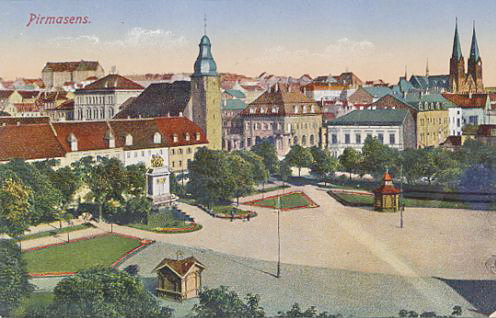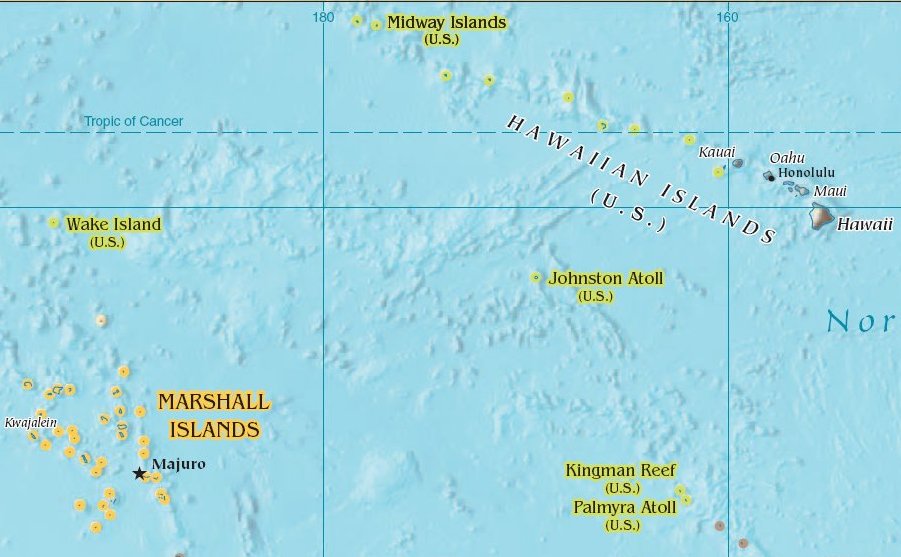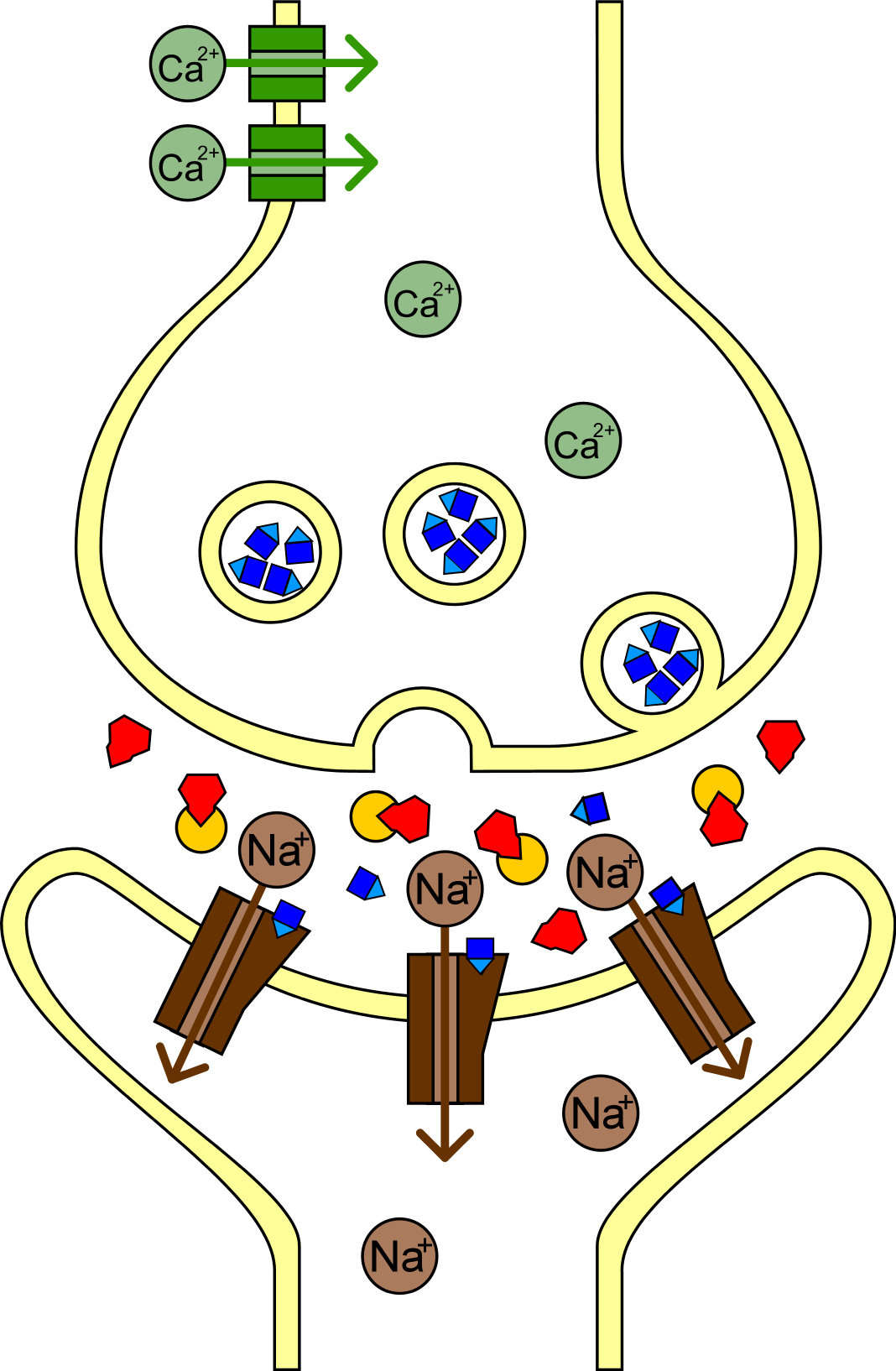|
Husterhoeh Kaserne
Husterhoeh Kaserne was a military facility in Pirmasens, Rhineland-Palatinate, Germany. Kaserne is a German language, German loanword that means "barracks." It was a United States military base 1945–1994. Since then it is a Bundeswehr, German base, most of which has closed. The base still has some US military operations and German military storage. Location It is at the Northern edge of the city of Pirmasens, approximately from the France, French border. It is bordered on the east by the Bundesstraße 270 and the west bLandesstraße 482 Construction Originally built in place of an apple orchard, the Husterhoeh Kaserne covered a large plateau to the North of the city of Pirmasens, as well having an extremely large system of caves and tunnels that ran to adjacent townships. The facility was initially started by the Germans during the 1930s; above-ground facilities were built to house Wehrmacht soldiers manning the Siegfried Line along the French border and included tunneli ... [...More Info...] [...Related Items...] OR: [Wikipedia] [Google] [Baidu] |
Pirmasens
Pirmasens (; (also ''Bermesens'' or ''Bärmasens'')) is an independent town in Rhineland-Palatinate, Germany, near the border with France. It was famous for the manufacture of shoes. The surrounding rural district was called ''Landkreis Pirmasens'' from 1818 until 1997, when it was renamed to ''Südwestpfalz''. History Early years The first mention of "Pirminiseusna", a colony of Hornbach Abbey, dates from 860. The name derives from St. Pirminius, the founder of the monastery. During the period it was under rule of the Prince-Bishopric of Metz, Bishopric of Metz. It was passed to Diocese of Speyer in last the quarter of the 11th century, then was captured by County of Nassau-Saarbrücken#County of Saarbrücken, County of Saarbrücken in 1100. In 1182, the County of Saarbrücken was divided by Simon II and Henry I, who were sons of Simon I. Pirmasens was given to Henry I and his dominion was named as County of Zweibrücken. He built Lemberg Castle to protect his dominion in 1198 ... [...More Info...] [...Related Items...] OR: [Wikipedia] [Google] [Baidu] |
POMCUS
POMCUS (Prepositioning Of Materiel Configured in Unit Sets) was a system that kept large amounts of pre-positioned U.S. military equipment in West Germany during the Cold War. The program was started in 1961. In the event of war with the Soviet Union, American soldiers could be flown with their "to-accompany-troops" (TAT) gear on Civil Reserve Air Fleet commercial airliners to use this pre-positioned equipment. The equipment was set up in unit configurations to aid in force building and movement to support the US Army's general defensive plan (GDP). In the early 1980s, most of the equipment for POMCUS came from US Army units in the US and had to be upgraded to meet specifications for pre-positioning in Europe. By the late 1980s, the plan had evolved to pre-position Six Divisions of equipment in the Netherlands, Belgium and Germany. Three Divisions were pre-positioned, with other sites being considered for the other three divisions. When the Berlin Wall fell, and the Soviet Union ... [...More Info...] [...Related Items...] OR: [Wikipedia] [Google] [Baidu] |
Kaiserslautern Military Community
The Kaiserslautern Military Community (KMC) is an American military community in and around Kaiserslautern, Germany, supporting United States Armed Forces and NATO The North Atlantic Treaty Organization (NATO ; , OTAN), also called the North Atlantic Alliance, is an intergovernmental organization, intergovernmental Transnationalism, transnational military alliance of 32 Member states of NATO, member s ... installations, such as the Ramstein Air Base, Landstuhl Regional Medical Center, Kapaun Air Station, Vogelweh Housing Area, Pulaski Barracks, Kleber Kaserne, Daenner Kaserne, Sembach Kaserne, Miesau Army Depot, and Rhine Ordnance Barracks. With around 54,000 people, including military service members, United States Department of Defense, Department of Defense civilians and contractors as well as their families, the KMC is the largest U.S. military community outside of the United States. Police and security The 569th United States Forces Police Squadron (569 USFPS), ... [...More Info...] [...Related Items...] OR: [Wikipedia] [Google] [Baidu] |
Johnston Atoll Chemical Agent Disposal System
Johnston Atoll Chemical Agent Disposal System (JACADS) was the U.S. Army's first chemical munitions disposal facility. It was located on Johnston Island, at Johnston Atoll and completed its mission and ceased operation in 2000. Background Prior to the beginning of destruction operations at JACADS, the atoll held about 6.6% of the entire U.S. stockpile of chemical weapons. Chemical weapons were stockpiled on Johnston Atoll beginning in 1971, including weapons transferred from Okinawa Island, Okinawa during the 1971 Operation Red Hat. Some of the other weapons stored at the site, including Sarin, Sarin (GB) and VX (nerve agent), VX Nerve Agent, were shipped from U.S. stockpiles in Germany in 1990. The shipments followed a 1986 agreement between the U.S. and Germany to move the munitions.Broadus, James M., et al. ''The Oceans and Environmental Security: Shared U.S. and Russian Perspectives'', Google Books, p. 103, Island Press, 1994, (), accessed October 25, 2008. The remainder of t ... [...More Info...] [...Related Items...] OR: [Wikipedia] [Google] [Baidu] |
Johnston Atoll
Johnston Atoll is an Unincorporated territories of the United States, unincorporated territory of the United States, under the jurisdiction of the United States Air Force (USAF). The island is closed to public entry, and limited access for management needs is only granted by a letter of authorization from the USAF. A special use permit is also required from the United States Fish and Wildlife Service (USFWS) to access the island by boat or enter the waters surrounding the island, which are designated as a National Wildlife Refuge and part of the Pacific Islands Heritage Marine National Monument. The Johnston Atoll National Wildlife Refuge extends from the shore out to 12 nautical miles, continuing as part of the National Wildlife Refuge System out to 200 nautical miles. The Pacific Remote Islands Marine National Monument extends from the shore out to 200 nautical miles. The isolated atoll has been under the control of the United States Armed Forces, U.S. military since 1934. Dur ... [...More Info...] [...Related Items...] OR: [Wikipedia] [Google] [Baidu] |
Operation Steel Box
Operation Steel Box, also known as Operation Golden Python (German name for the transport in Germany: Aktion Lindwurm), was a 1990 joint U.S.–West German operation which moved over 100,000 U.S. chemical weapons from Germany to Johnston Atoll. Background At a United States Army Site near Clausen, West Germany, 100,000 GB and VX filled American chemical munitions were stored in 15 concrete bunkers.Mauroni, Albert J. ''Chemical Demilitarization: Public Policy Aspects'',Google Books, Greenwood Publishing Group, 2003, p. 126–28, (). These munitions were managed by the 330th Ordnance Company (EOD) and guarded by the 110th Military Police Company both headquartered in nearby Münchweiler an der Rodalb. The propellants for these munitions were stored in Leimen Site 67. The GB and VX munitions had undergone a refurbishment from 1980 to 1982. The weapons in this depot were scheduled to be moved due to an agreement between the United States and West Germany. The 1986 agreement, be ... [...More Info...] [...Related Items...] OR: [Wikipedia] [Google] [Baidu] |
VX (nerve Agent)
VX is an extremely toxic chemical synthesis, synthetic chemical compound in the organophosphorus compound, organophosphorus class, specifically, a phosphonate, thiophosphonate. In the class of nerve agents, it was developed for military use in chemical warfare after translational science, translation of earlier discoveries of organophosphate toxicity in pesticide research. In its pure form, VX is an oily, relatively Volatility (chemistry), non-volatile liquid that is amber-like in colour. Because of its low volatility, VX persists in environments where it is dispersed. VX, short for "venomous agent X", is one of the best known of the V nerve agents and originated from pesticide development work at Imperial Chemical Industries (ICI). It was developed further at Porton Down in England during the early 1950s, based on research first done by Gerhard Schrader, a chemist working for IG Farben in Germany during the 1930s. It is now one of a broader V-series of agents which are class ... [...More Info...] [...Related Items...] OR: [Wikipedia] [Google] [Baidu] |
Sarin
Sarin (NATO designation GB nerve_agent#G-series.html" ;"title="hort for nerve agent#G-series">G-series, "B" is an extremely toxic organophosphorus compound.Sarin (GB) Emergency Response Safety and Health Database. National Institute for Occupational Safety and Health. Accessed April 20, 2009. that has been often used as a due to its extreme potency as a . Sarin is a volatile, colorless and odorless liquid. Exposure can be lethal even at very low concentrations, and death can occur within one to ten minutes after direct inhalation of a leth ... [...More Info...] [...Related Items...] OR: [Wikipedia] [Google] [Baidu] |
Dahn
Dahn () is a municipality in the Südwestpfalz district, in Rhineland-Palatinate, Germany. It is situated in the Palatinate Forest, approximately 15 km southeast of Pirmasens, and 25 km west of Landau. It is part of the ''Verbandsgemeinde'' ("collective municipality") of Dahner Felsenland. Geography Dahn is located 210 m above sea level in a valley of the Dahner Felsenland, a part of the Wasgau, which is itself a part of the Palatinate Forest. A small Stream, creek, the Lauter (Rhine), Lauter, flows through Dahn, and here, in the area of its headwaters, is called the ''Wieslauter''. The border with Alsace (France) is located 10 km south of Dahn. History Coat of arms In 1952 the coat of arms was recreated as a result of historical research. The new shield, parted per chevron, has on its dexter chief: azure (blue), a cross argent (silver); on its sinister chief: gules (red), an eagle argent (silver) and on its base: or (gold), a fir tree vert (green). The fir t ... [...More Info...] [...Related Items...] OR: [Wikipedia] [Google] [Baidu] |
Clausen, Germany
Clausen is a municipality in Südwestpfalz district, in Rhineland-Palatinate, western Germany. Clausen belongs to the local association community of Rodalben. The US Army's 330th Ordnance Company maintained the then classified stocks of GB and VX nerve gas located at Site 59 in Clausen. 110th Military Police company was in charge of guarding the site with a 42 man guard force. The nerve agents at Site 59 were removed under Operation Steel Box in 1990. These shells were poorly maintained and had numerous leaks from the caustic chemicals that they contained. In addition, the fence line was supposedly sprayed with Agent Orange to deter weeds. A maintenance program in 1979 removed a number of broken shells and replaced the gaskets on those that were still uncompromised. The shells were transported by truck, rail and ship ultimately ending up at Johnston Atoll for incineration at the Johnston Atoll Chemical Agent Disposal System facility. Site 59 was sold and the bunkers were use ... [...More Info...] [...Related Items...] OR: [Wikipedia] [Google] [Baidu] |
Maßweiler
Maßweiler is a municipality in Südwestpfalz district, in Rhineland-Palatinate, western Germany. Maßweiler possessed a large cavern that had been used by Nazis in World War II. There were supposedly five levels in the cave, the lowest of which had trouble with occasional flooding. A large staircase for pedestrian traffic was near the highest point of the cavern, which led to an exit. Beside the stairs were rails that assisted in transport of earth from the cavern as it was being enlarged for German forces. The angle of this stair and matching rail system was estimated to be 30 degrees, and the height of the chamber approximately 175 feet. After the end of World War II, the cavern was occupied by the U.S. Army, in the late 1980s by a communications company. Entering the property, it appeared quite small and remote, but upon entering the cavern, the length and size of the facility was impressive. When the U.S. Army began to downsize in the 1990s, Maßweiler, and associated U.S. ... [...More Info...] [...Related Items...] OR: [Wikipedia] [Google] [Baidu] |






